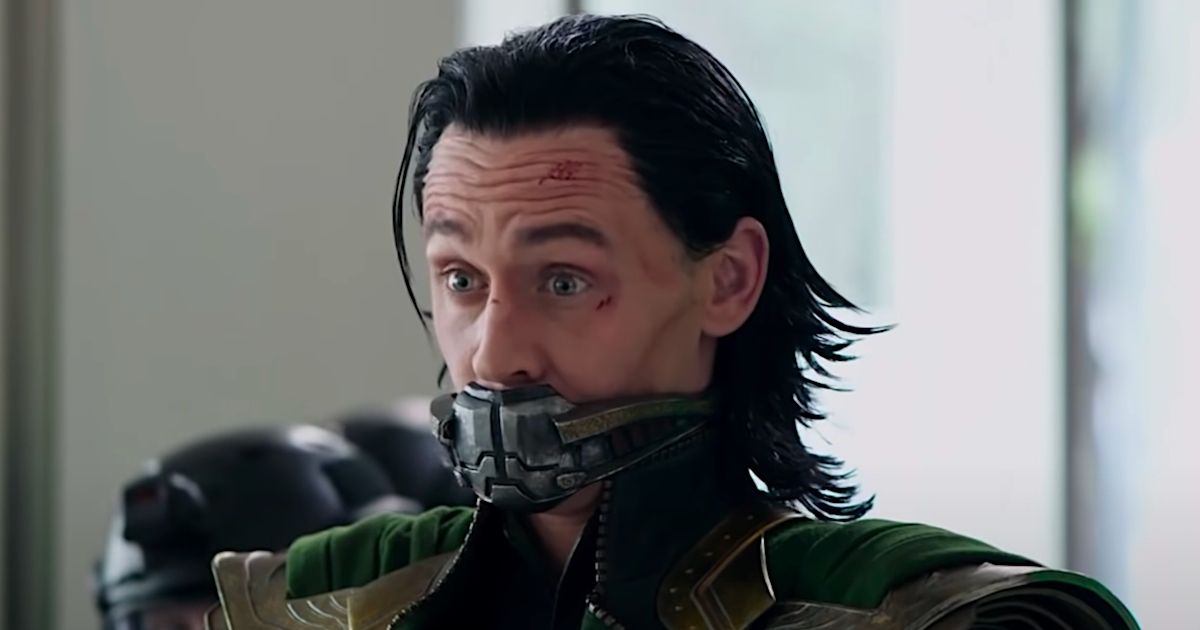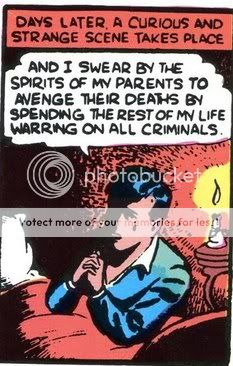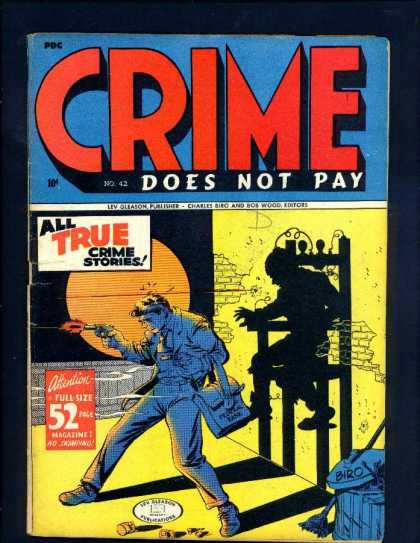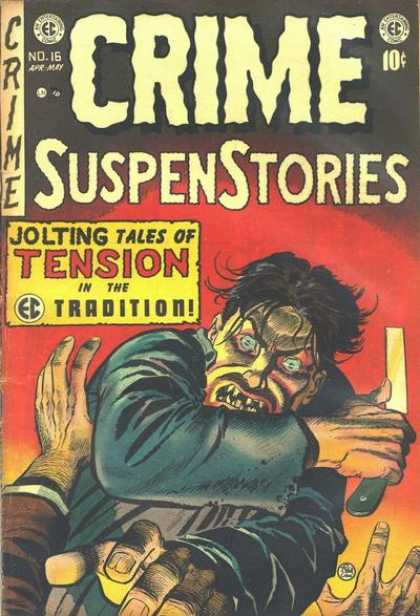theMan-Bat
Team Classic DC
- Joined
- Jan 29, 2006
- Messages
- 3,351
- Reaction score
- 35
- Points
- 58
1) In a tv documentary about Superheroes today, old Stan Lee said something which I agree with. When Cap America punched Hitler in 1941 on that cover it was a different time, and it was clear to see that what Hitler was a crime against humanity. Later on the identifying óf the enemy became more difficult. First the cold war, and now this "War on terror", and as Lee put it: "To have Cap America punch a muslim leader the same way would not only be out dated, but would also be in bad taste". I agree. The last thing we need now is more hate mongering. I am glad that Miller could not use Batman, or any other classic character, for this purpose. What he does with his own characters concerns me less, although I still think it shows his brain paralysis.
You shouldn't try to diagnose somebody of brain paralysis with your many inaccuracies. Frank Miller does not have a superhero punch out any Muslim leader. He has a superhero defeat al-Qaeda terrorists after a terrorist attack murdered innocent citizens. I don't have a problem with Batman defeating al-Qaeda. They are--and this is a key point--not considered true Muslims by many people of Islamic faith. Al-Qaeda is an Islamofascist terrorist group. They use Islam to manipulate, control, make their followers believe they are doing Allah's work, and preach ignorant hate. They incriminate the faith of Islam by using it as a motivation and justification for their actions. Many Muslims denounce the al-Qaeda terrorists as not truly representing Islam.
http://kurzman.unc.edu/islamic-statements-against-terrorism/
It was also silly for Marvel and DC to have Reagan appear in the 80's stories. It could have been handled in a more elegant way, for example to create a president for the comics who suggested Reagan, but not being Reagan.
I have no problem with comic books satirizing Ronald Reagan. Frank Miller explained why he had Reagan appear, "As far as the role of political satire and parody in comics, it seemed to me that we were just missing a big bed. Every time I opened a newspaper, unless it was the New York Times, you see an editorial cartoon, and could see how comics could play against current moments and current issues. I felt that we should be in the middle of that game with all the rest. Everybody else talks politics, why can’t we? I composed Dark Knight Returns when Ronald Reagan was president, and very silly things seemed to be happening, and I wanted to satirize them, but they just kept topping me."
http://convergingtoacenter.blogspot.com/2006/02/manga-artists-part-5-american-artist.html
2) Speaking of bad taste, for the last 17 years I have considered Frank Miller to be the epitome of bad taste. Gary Groth expressed in an old issue of the comics journal that the common defense for Miller being that what he (Miller) did was to simply depict the violence of today was wrong. Groth stated that Miller is NOT depicting violence, he is just violent. There is a clear difference, and that rings even more true now 30 years after Groth wrote this.
No, what critic Gary Groth stated in Comics Journal #71 (1982) is that a "critical singsong about the book (Frank Miller's Daredevil) is that it's about violence." Kim Thompson had interviewed comic book writer Mike Friedrich (who had notably written The Spectre, Justice League of America and Star*Reach) and asked "Do you see any comics currently being produced that you think have any adult values?"
Mike Friedrich replied, "Well, yes, I do. Daredevil comes to mind within the realm of dealing with issues of justice, of the law, of violence."

Gary Groth disagreed and said that "The book (Daredevil by Frank Miller) isn't about violence at all, it's just violent."

Frank Miller does deal with issues of justice, of the law, of violence, showing the brutality of violence and death. Frank Miller depicts violence in his material, of course, as he writes and draws superhero action entertainment, action noir entertainment, martial arts action entertainment, science fiction action entertainment, sword and sandal mythological action entertainment. Frank Miller is not a violent person or he would have been arrested for assaults, like comic book writer/artist Steve Rude has been.
http://robot6.comicbookresources.com/2011/11/steve-rude-art-discounted-to-raise-bail-following-creators-arrest/
Frank Miller explained in Comics Journal #70:



I have not read the latest garbage from Miller, because I gave up on the guy in 1995.
It would be wise to actually read books for yourself or at least get the facts straight about them before declaring them "garbage." You admit that you gave up on Frank Miller's comics in 1995 (so you haven't read Happy Birthday, Martha Washington (1995), Martha Washington Stranded in Space (1995), The Big Guy and Rusty the Boy Robot (1995), Dark Horse Presents #100 (1995), Sin City: Silent Night (1995), San Diego Comic Con Comics #4 (1995), Dark Horse Presents #114 (1996), Sin City: the Big Fat Kill (1996), Sin City: That Yellow Bastard (1996-97), Sin City: Lost, Lonely & Lethal (1996), A Decade of Dark Horse #1 (1996), Martha Washington Saves the World (1997-98), Bad Boy (1997), Sin City: Family Values (1997), Sin City: Sex & Violence (1997), 300 (1998), Orion #3 (2000), Superman and Batman: World's Funnest (2000), Dark Horse Maverick 2000 (2000), Sin City: Hell and Back (2001), Batman: The Dark Knight Strikes Again (2001-02), 9-11 (2002), Dark Horse Maverick: Happy Endings (2002), RoboCop (2003), AutobioGrafix (2003), All-Star Batman and Robin the Boy Wonder (2005-08), Martha Washington Dies (2007), Usagi Yojimbo #100 (2009) and Holy Terror (2011)). It's showing total ignorance to bash books as "garbage" that you haven't read and are ill informed of. Too many people allow others criticisms to make a decision for them. I view it plainly as allowing others to make up your mind for you.
As a teen I was a Miller fan, and thought DKR was a masterpiece. Now I think it is everything but. I think he did some good things for Marvel in the late 70's/early 80's, notably Daredevil, but that's it. Everyone agrees that Miller selfdestructed at one point. What people diagree on is when. I don't think it in the new millenium, or even in the 90's, but specifically with the Dark Knight Returns. The Dark Knight Strikes Again is just a continuation of what he has started. As I said, I liked his Marvel stuff, and there is even a Batman story of his from 1979, titled "Wanted: Santa Claus - Dead or alive", but that was written by Denny O'neill, and before Miller had gone bad.
Everyone does not agree that Miller was good originally and then self-destructed at one point. Everyone does not agree that Frank Miller's Daredevil was good. Everyone does not agree on Frank Miller at all. The idea that everyone loved Frank Miller's '80s material and then turned against Frank Miller more recently with Sin City or Batman: The Dark Knight Strikes Again or with All-Star Batman & Robin the Boy Wonder, is a false assumption. Frank Miller's had his haters since his early Daredevil material. Frank Miller has been very controversial, from his original Daredevil run to today. He's very polarizing. There were people who disliked his Daredevil material and felt it was too grim, too violent, too nasty, too brutal, too noir. Comics Journal #58 (1980) reported that Marvel's Jim Shooter refused to publish Frank Miller and Roger McKenzie's two-part drug storyline titled "Child's Play" and "Good Guys Wear Red!" in Daredevil, intended by Frank Miller, Roger McKenzie and editor Denny O'Neil for Daredevil #167 and 168 (1980), after it was not approved by the Comics Code Authority.

Marvel finally published the two-part story in Daredevil #183 and 184 (1982). In Comics Journal #77 (1982) it was reviewed by Ted White, who called it "a real letdown."

Frank Miller said in Comics Journal #70 (1981), "There has been an increasing number of letters complaining about the violence in Daredevil. At the same time, the sales have been going up astronomically."
In Comics Journal #71 (1982) Dwight Decker complained about how grim Frank Miller's Daredevil was:

Also in Comics Journal #71 (1982) Gary Groth complained about how brutal Frank Miller's Daredevil was:


Many of the very things they were railing against, the hard-boiled noir (vigilante detectives, corruption, hookers with hearts of gold and drug pushers are classic noir archetypes), the grimness and brutality of the violence (a major characteristic of noir is the brutality of the violence), are precisely elements that I find entertaining about Frank Miller's material. I am not offended by the violence. Within the genres Miller writes, action is necessarily violent, and the villain's must do evil things. The moral justification for the violence is, of course, the protagonist trying to defeat his antagonistic villainous opponents. We live in violent times, art reflects that. Violence existed long before comic books or movies were made, so blaming one or the other is preposterous.
3) Even then he was no match for Neal Adams, and although both of them - and O'neill like them - have declined, Adams was still light years ahead of Miller. It saddens me to see what Adams is doing now, because he was truly great in the 70's. Adams fall from a greater height than Miller, and that makes it even harder to watch.
Whatever art you feel is good or bad comes down to personal preference. It is subjective (is it aesthetically pleasing to you, etc.). I enjoy a wide variety of art. Frank Miller's artistic styles of drawing are very different than Neal Adams'. Frank Miller made variations on his art style with different series from Daredevil to Ronin to Batman: The Dark Knight Returns, etc. I'm glad that Neal Adams has returned to Batman again. Of course Neal Adams' art doesn't look the same as it did in the 1970s. He doesn't have the contribution of Dick Giordano since Dick was retired, suffering from lymphoma and later also from leukemia and died in 2010. Neal Adams is inking the majority of the Batman: Odyssey series himself and there is a wide variety of guest inkers on various pages. Neal Adams is not only penciling Batman: Odyssey, he is also writing Batman: Odyssey along with inking the majority of the series himself and he is 70 years old. Other artists his age are either retired or deceased. I'm glad Neal Adams is still around and I appreciate and am enjoying Neal Adams' return to Batman and it's fun to see the artistic contributions of guest inkers Bill Sienkiewicz, Michael Golden, Kevin Nowlan, Scott Williams and Paul Neary.
4) My main problem with Miller is that the Dark Knight Returns, and to a certain degree Year one, violated some classic characters. Not so much Batman, but Superman and Catwoman especially, but also The Joker.
Not only do I not like the visual style he's employing (I think it's ugly), but I think he is doing something with the characters which is not part of their essence.
I am not against a story about the heroes as older, more disillusioned, bitter people, or even having become enemies. It is just that Miller uses these charaters in a wrong way. When using established characters you should be able to tell their story instead of simply using them to tell YOUR kind of story. They have to be of use again afterwards, and to stay true to their essense. I do not like the depiction of Superman as a government agent. I think it would be more in his spirit to become so disillusioned with the hopelesness of the state of mankind that he would withdraw from it (as in Kingdom Come). Superman has traditionally been the most humanistic of the two, despite being an alien. The eternal innocent, but not naive.
If Frank Miller turned Superman into his kind of character for his kind of story then he would have made Superman into a dark vigilante type, not a patriotic law-abiding establishment figure. Superman has been shown iconically as a patriotic member of the establishment for decades in the '40s, '50s, '60s, '70s, '80s, '90s, '2000s in the comic books, on radio, on television and on films. The Golden Age, Silver Age, Bronze Age and Modern Age. For decades Superman has been involved legally with the police (Superman #20 (1943) "Lair of the Leopard", and many others), as well as the U.S. Army (Superman #23 (1943) "America's Secret Weapon", and many others), the U.S. Navy (Superman #15 (1942) "The Napkanese Saboteurs", and many others), the F.B.I. (Superman #25 (1943) "The Man Superman Refused to Help", and others), the U.S. Treasury Department (Superman #102 (1956) "Superman For Sale"), the Secret Service (Action Comics #256 (1959) "Superman of the Future") and U.S. Presidents (Superman #107 (1964) "Superman's Mission for President Kennedy").
The Superman School for Officers' Training, the nations largest Army officers training center, constructed single-handedly by Superman, at super-speed, as a favor to the U.S. Army in Action Comics #210 (1943) "Make Way for Fate!" Superman has held the rank of General in the U.S. Army in Superman #133 (1959) "Superman Joins the Army!" It's revealed that every nation knows how to get in touch with Superman through the White House in Action Comics #306 (1963) "The Great Superman Impersonation." It would actually have been out of character with the way Superman has iconically been since the early '40s for Frank Miller to have had Superman suddenly just disregarding the law, his iconic patriotism, and just going rouge and becoming a vigilante again in Batman: The Dark Knight Returns. On the other had, in Batman's case, he had returned as a dark, mysterious vigilante back in the '70s by Denny O'Neil, etc. Neither Superman or Batman feel that the state of mankind is hopeless, they are not consumed with disillusionment and bitterness in Batman: The Dark Knight Returns. Superman and Batman are both still fighting crime. Superman fights crime in Gotham in Batman: The Dark Knight Returns and Superman heroically diverts a bomb from a populated area and suffers the explosion himself, and still hopes to be able to save mankind. The withdraw of the Kingdom Come Universe Superman was because the general public and the media turned against him and preferred the dark vigilante Magog, and the Kingdom Come Universe Joker had killed Lois Lane, Jimmy Olsen and Perry White. The general public and the media did not turn against the Dark Knight Universe Superman and prefer any dark vigilante. Batman is extremely controversial and hated by much of the general public and the media in the Dark Knight Universe. Lois, Jimmy and Perry had not been killed by the Joker in the Dark Knight Universe.
I do not like the homosexual (and perhaps homophobic) way that both Miller and Alan Davis portray The Joker. I never saw that in the character before, and I do not se any use for it. My biggest problems with Miller is the way he uses Catwoman in his two seminal 80s works.
Frank Miller does not portray the Joker as a homosexual. The Joker calling Batman "darling" and "my sweet" in Batman: The Dark Knight Returns was not an indication of a homosexual love, but rather a sinister mocking, a sadistic taunt. The Joker explained in Batman: The Dark Knight Returns that he loves Batman for keeping count of all of the people the Joker has killed. As Denny O'Neil explained in the book Batman Unauthorized: Vigilantes, Jokers, and Heroes in Gotham City (2008), "His (the Joker's) 'affection' for the Batman, whom he calls 'darling' more than once, comes precisely from knowing how much the mayhem he causes wounds the other man. He knows exactly what he is doing, tormenting the Batman with his crimes, deliberately attempting to force Batman to take a life preemptively. Finally, in the end, when the Batman broke his neck but failed to do so with enough pressure to kill, he (the Joker) chided, 'I'm really...very disappointed with you, my sweet...the moment was...perfect...and you...didn't have the nerve... Paralysis...really...they'll kill you for this...and they'll never know...that you didn't have the nerve..." The Joker finished himself off, and as the Batman hobbled away, the clown's corpse seemed to mock him for his lack of nerve."
The Joker is referred to as Bruno's "boyfriend in the loony bin" by the clerk at the liquor store in Batman: The Dark Knight Returns. I believe she's called the masculine name Bruno because she's unfeminine. She's a neo-Nazi tomboy punk with a buzz-cut. The stretch marks reference in Batman: The Dark Knight Returns was referring to her having plastic surgery to cover up her aging sagging breasts, etc. As seen in All-Star Batman & Robin the Boy Wonder, she already had breasts, which takes place long before her appearance in Batman: The Dark Knight Returns. I've never believed Frank Miller was trying to imply in Batman: The Dark Knight Returns that Bruno was a man who had became transgendered. Trans people want to look, dress and act feminine and adopt a feminine name, Bernice, not Bruno. It's also made pretty clear that the Joker had just had sex with Donna Gugina in All-Star Batman & Robin the Boy Wonder, as we see the Joker shirtless and her putting her clothes on and saying to Joker, "I was just joking that maybe you slipped something into my drink. It's really not my style, doing...well, this sort of thing. Not with someone I just barely met," and the Joker refers to, "That tawdry thing we just did with each other in this bed." Alan Davis and Mike W. Barr did not portray the Joker as a homosexual, either.
Last edited:







































 t:
t: